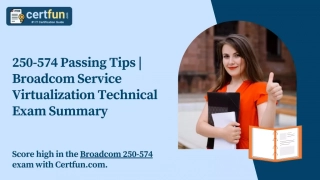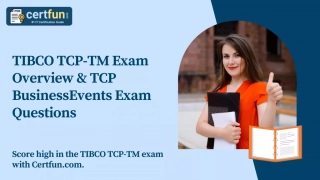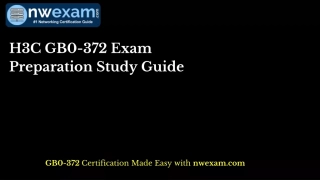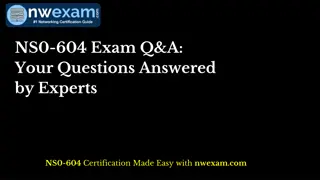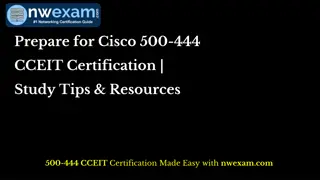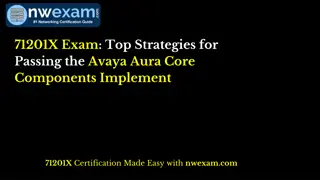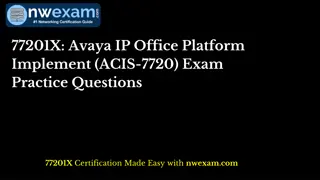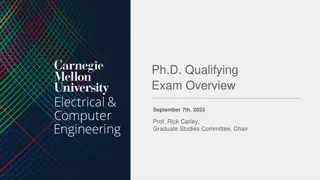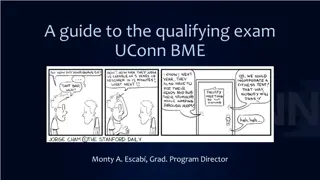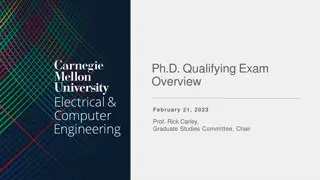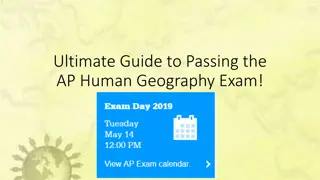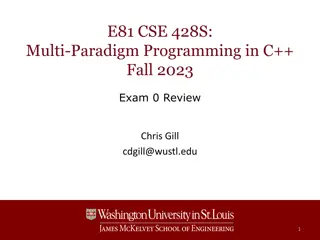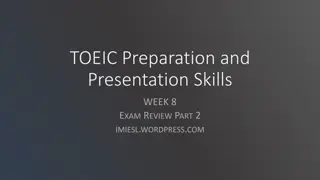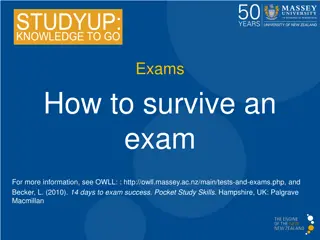Effective Exam Criteria and Study Skills Summary
Effective exam criteria and study skills involve summarizing and note-taking techniques to condense essential information. Understanding exam questions, utilizing starter sentences and connectives, structuring paragraphs, and crafting conclusions are key components. In note-taking, aim to retain necessary details while reducing length. Record definitions in a concise format for better recall. Summarize information as bullet points or numbered lists for clarity. Remember, for exam success, focus on explanation (AO1) and evaluation (AO2) in responses, demonstrating knowledge, analysis, and evaluation effectively.
Download Presentation

Please find below an Image/Link to download the presentation.
The content on the website is provided AS IS for your information and personal use only. It may not be sold, licensed, or shared on other websites without obtaining consent from the author. Download presentation by click this link. If you encounter any issues during the download, it is possible that the publisher has removed the file from their server.
E N D
Presentation Transcript
PBE Study Skills and Assessment Summarising and note-taking Exam criteria Understanding the question Introductions Starter sentences and connectives Paragraphs Conclusions When we summarise in our notes, we aim to keep necessary detail but reduce length Record definitions in a shortened version that you will be able to remember A cupcake, also known as a fairy cake, is a small cake designed to serve one person, which may be baked in a small thin paper or aluminium cup. As with larger cakes, icing and other cake decorations, such as candy, may be applied. The first mention of the cupcake can be traced as far back as 1796. Avoid remembering dates this is unnecessary for the PBE exam. If you want to include a reference to dates, remember the century only In the early 19th century, there were two different uses for the name cup cake or cupcake. In previous centuries, before muffin tins were widely available, the cakes were often baked in individual pottery cups, ramekins, or moulds and took their name from the cups they were baked in. This is the use of the name that has remained, and the name of "cupcake" is now given to any small cake that is about the size of a teacup. While English fairy cakes vary in size more than American cupcakes, they are traditionally smaller and are rarely topped with elaborate icing. Record information as bullet points or numbered information this will help you to remember the key points in an exam Write down important ideas in shortened form but in such a way that you will be able to expand on points again later in an essay The other kind of "cup cake" referred to a cake whose ingredients were measured by volume, using a standard- sized cup, instead of being weighed. Cupcake, first discussed 18th century Serves one, size of teacup Can be decorated e.g. icing, candy Before muffin tins were widely available, often baked in cups, ramekins or moulds name taken from what they were baked in English version: traditionally smaller, less elaborate icing 2 uses small cake or cake measured by volume using standard cup
There are two parts to the EXAM CRITERIA. In the exam, AO1 refers to EXPLANATION. Candidates are required to demonstrate knowledge and understanding of beliefs, including religious, philosophical and/or ethical thought and teaching and how these influence the beliefs and practices of individuals, communities and societies. It also includes the ability to explain cause and significance of similarities and differences in belief, teaching and practice and different approaches to the study of religion and belief. AO2 refers to EVALUATION. This is the ability to analyse and evaluate aspects of, and approaches to, religion and belief including their significance, influence and study. Features of an A Grade essay at AS is described as having avery good demonstration of knowledge and understanding in response to the question (AO1) and a very good demonstration of analysis and evaluation in response to the question (AO2). Focuses on the precise question throughout Has a very good selection of relevant material which is used appropriately Shows that the candidate has accurate, and detailed knowledge which demonstrates very good understanding through either the breadth or depth of material used Uses technical terms and subject vocabulary accurately and appropriately Uses a very good range of scholarly views, academic approaches, and/or sources of wisdom and authority to demonstrate knowledge and understanding A clear and convincing argument Successful and clear analysis and evaluation Views very well stated, coherently developed and justified Shows a well developed and sustained line of reasoning which is coherent, relevant and logically structured
Features of an A* Grade essay at A2 is described as having an excellent demonstration of knowledge and understanding in response to the question (AO1) and an excellent demonstration of analysis and evaluation in response to the question (AO2). Fully comprehends the demands of, and focusses on, the question throughout Excellent selection of relevant material which is skillfully used Accurate and highly detailed knowledge which demonstrates deep understanding through a complex and nuanced approach to the material used Thorough, accurate and precise use of technical terms and vocabulary in context Extensive range of scholarly views, academic approaches, and/or sources of wisdom and authority are used to demonstrate knowledge and understanding Excellent, clear and successful argument Confident and insightful critical analysis and detailed evaluation of the issue Views skillfully and clearly stated, coherently developed and justified There is an excellent line of reasoning, well-developed and sustained, which is coherent, relevant and logically structured. At AS, 15 marks are allocated for AO1 and 15 marks are allocated for AO2. At A2, 16 marks are allocated for AO1 and 24 marks are allocated for AO2. You will also be expected to refer to more scholars, show a more detailed understanding of the literature, criticise and analyse material much more and use a more nuanced approach whereby you focus even more on the grey areas and the choice of words used in the question. Throughout your essay, there should be sustained and well-developed reasoning before reaching your conclusion. This can all be done at AS to improve essays but will be vital at A2.
When you are trying to understand a question, think about the command words used. It can help you to re-write the question in a simple way or even plan your essay around the title of the question. Remember that the examiners write and re-write these exam papers A LOT, so if a word has been included, it is important! Assess the view that everyone should have cupcakes. The word everyone is key this is, again, encouraging you to critique all-or-nothing views What is the COMMAND WORD used? It will always involve an element of evaluation Assess the extent to which everyone should have cupcakes. The word EXTENT encourages you to think of the grey area and the many different responses on a spectrum that are available for discussion The question outlines the field of study you could bullet point the definitions and key ideas that you will discuss. Sample planning around the question: highlight the key words Assess the extent to which everyone should have cupcakes. Write out the definitions and key ideas you will discuss. Remember to include scholars and, if you think you will forget them, quotations. You can do this for every question before you begin your exam so that you don t forget key details later. Finally, number the key ideas to help you remember which order you will write them up in. In PBE, you should explain and criticise within paragraphs. For each criticism, you could write down in brackets the relevant explanation points you will give. You can also match up linked ideas with arrows. YES NO GREY AREA 3.6 billion industry (1) Taste good (3) Bentham pleasure principle (3) Diabetes (2) Obesity (2) Mill (4) Kant (5) Issues with Kant & Freedom of choice (6) C: Not everyone should, but everyone could
Once you have written your plan, the introduction should be relatively easy to write. There are no set rules for how to write a good essay but these tips can be useful! Start by unpickingdefinitions and outlining what the question is asking or the problem at hand (A). There might be several possible interpretations of the question. Then outline the main arguments for and against the statement. You could just pick one on each side to outline. Leave out your favourite argument (B). Summarise your strongest argument in first or third person, depending on your preference (C). Assess the extent to which everyone should have cupcakes. YES NO GREY AREA 3.6 billion industry (1) Taste good (3) Bentham pleasure principle (3) Diabetes (2) Obesity (2) Mill (4) Kant (5) Issues with Kant & Freedom of choice (6) C: Not everyone should but everyone could The first reference to cupcakes can be found in the 19th century in America. Their growing popularity has culminated in a 3.6 billion dollar industry today. Whilst the cakes are popular due to their sweet taste, one can question the claim that everyone should eat them given the rise in diabetes and obesity in the Western world (A). Whilst Bentham would argue that everyone should be able to do what brings about the most pleasure, scholars such as Kant and Mill outline the need for rules and would, in all likelihood, argue that everyone ought not to have cupcakes (B). Whilst there is merit to suggesting that cupcakes should be avoided, it seems that it would be preferable to give people freedom of choice, rather than state that they must or must not eat cupcakes (C). ARGUMENTS Strongest on either side apart from your own OVERALL What you will be arguing is the strongest argument DEFINE Key terms and the question
Varying language and using a range of sentence starters and connectives can improve the quality of your essay. Writing longer sentences does not make your essay better! Try and find the most appropriate words to keep sentences concise and clear. Longer sentences can be broken up using semi-colons. EXAMPLES For example As exemplified by Such as Including As is shown by In the case of This is suggested by In the case of CONTRASTING With regards to By contrast However On the other hand Despite this Although Whereas Concerning SUGGESTING This suggests This shows This demonstrates It is clear that One can argue that This emphasises As a result Since then ADDING POINTS In addition Moreover In the same way Equally As with More importantly First, secondly, thirdly Furthermore CONCESSION Whilst it is true that.. Despite the fact that In spite of Despite this However Nevertheless Although Whilst one can argue that SUMMARISING In other words Put simply That is Overall Thus In sum In conclusion The strongest argument is Example sentences using these terms: Bentham s argument comprises of three parts: first, his use of the principle of utility; second, his understanding of pleasure and pain; and, finally, his application of the hedonic calculus. Whilst Bentham attempted to create a clear ethical framework, Mill argued that it would be far clearer to use rules of thumb to ascertain the morality of an action. Bentham argued that the morality of an action is determined by the amount of pleasure it produces. In the case of cupcakes, if eating a cupcake will produce the greatest aggregate happiness, it ought to be done.
There is no set formula for writing a good essay, since people may have widely different styles. That said, when writing paragraphs there are key features that ought to be included. Each paragraph should begin with a clear POINT that is highly relevant to the question. The point should then be EXEMPLIFIED and EXPLAINED. Using SCHOLARS and QUOTATIONS adds depth. The point should then be ANALYSED and EVALUATED. Finally, the point should be returned to in a summary sentence that LINKS BACK to the title of the question. This, again, ensures that all information is relevant and sufficiently explained. TOP BUN: THE POINT Give a clear point that is highly relevant to the question. FILLINGS: SCHOLARS, EVIDENCE, EXPLANATION, ANALYSIS Give examples that support the point or that show key aspects of a theory. For example Refer to scholars that are relevant, including shortened versions of quotes. He argues that Explain these examples and the theory further. This entails Analyse by commenting on the strength of an argument. This is a significant argument because BOTTOM BUN: THE LINK Link back to the question. This shows that AND REPEAT: Follow the same steps for the EVALUATION. You can evaluate a point in the same paragraph as part of your analysis (like a DOUBLE MAC), or in a separate paragraph you are going to write a lot about the opposing theory.
Conversely, one could argue that nobody should have cupcakes given their high sugar content. The World Health Organisation estimates that one in four people in the Western world is consequences of this include a shortening of the life span. The scientist Robert Lustig "Politicians have to come in and reset the playing field by which he means politicians must make it much harder for companies to sell sugary goods in order to help reduce the epidemic caused by foods such as cupcakes. Despite widely available medicine, people have begun to present with a number of health problems as a result of eating fatty and sugary foods regularly, including tooth decay, diabetes and, albeit less frequently, heart disease. This is a significant argument given the rising cost for government in treating these health problems. It may be, then, that politicians must ban sugary foods such as cupcakes rather than encourage everyone to do it. The paragraph begins with clear point that relate to the whole argument Scholars and sources of wisdom are referred to and examples are given to emphasise the point obese and that The meaning of these examples and ideas is further explained The argument is analysed and the significance of it is considered The question is referred to again at the end Nuance is considered by analysing theories in more detail and re-phrasing the question statement On the other hand, banning cupcakes would involve limiting freedom of choice. Mill argues that freedom is the greatest good and can never be limited by government so long as the free choices made are not harming society, only the individual. This is because personal autonomy is a greater good than controlling health. Even Lustig does not argue that these goods must necessarily be banned, but, rather, controlled so that companies make less money from selling them. One could also put people off buying cupcakes by charging more tax on sugary products. Thus, whilst it would be wrong to suggest that everyone should consume cupcakes, claiming that nobody should be allowed to is also wrong. Perhaps, the term should should be understood as a recommendation, instead, whereby people can buy cupcakes but ought not to since they will harm their bodies.
Your conclusion is an opportunity to revisit your arguments throughout the essay. Some people like to give their strongest argument in the conclusion whilst others prefer to give their strongest argument before the conclusion and just summarise the whole argument again at the end. Make sure that you do not just restate your points very simply as this will not add anything to your essay! The conclusion will share a lot of similarities with your introduction. Many people also like to use first person in the conclusion to emphasise that it is their own favoured argument. Conclusions are very important so make sure you leave time at the end. It is also important to make sure that you evaluate and reach mini-judgements throughout the essay, rather than leave this all to the conclusion. RE-STATE What was the question asking you? SUMMARISE What were some of the best arguments? INTERPRET Does your conclusion depend on interpretation of the question? EMPHASISE Why is your argument the strongest? Overall, I would argue it would be wrong to say that everyone should have cupcakes. First, one must consider what the effects would be individuals, such as those who have diabetes, in making cupcakes mandatory. Second, one must question the impact of everyone eating cupcakes on the NHS and government, given the health concerns. This, from the outset, drastically limited the extent to which the statement could be accepted. On the other hand, banning cupcakes would also be wrong since it would limit autonomy. Instead, it would be better to reformulate the statement to say that everyone should be allowed to have cupcakes, since this would ensure people s freedom without suggesting that everyone must do something that would harm them. Thus, whilst I concede there are some benefits to preventing people from having cupcakes, I favour a libertarian approach, such as that of Mill, is preferable since it emphasises the importance of freedom: people ought to have the option of cupcakes, but not be forced to eat or avoid them.


